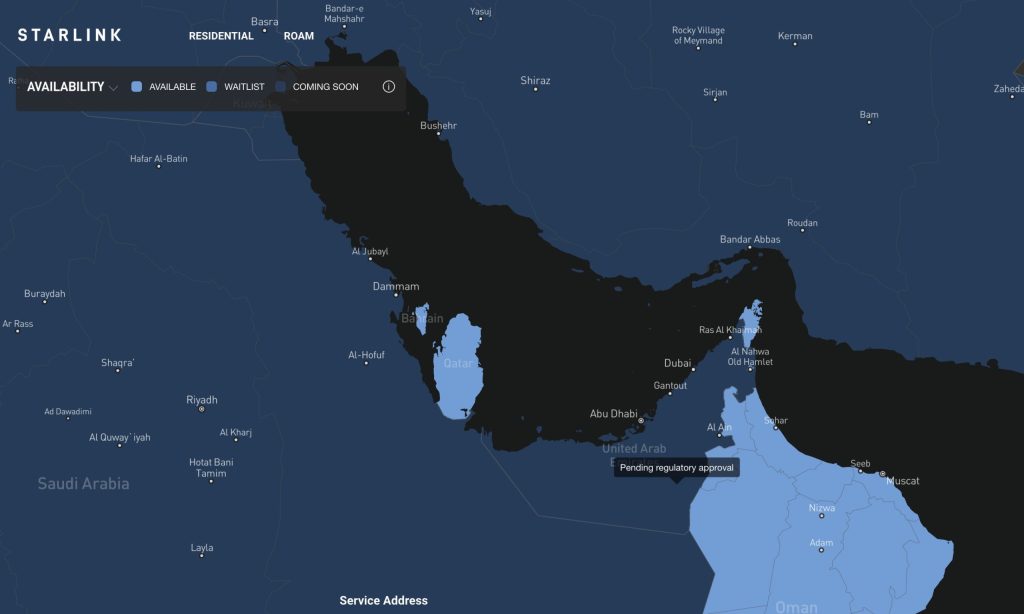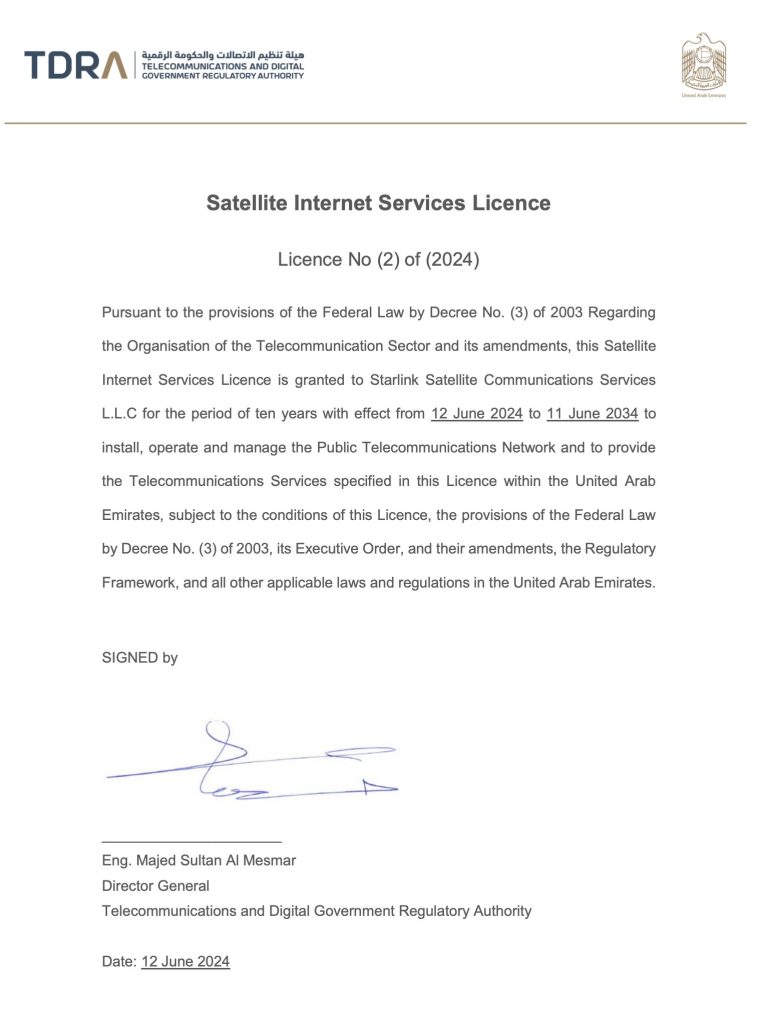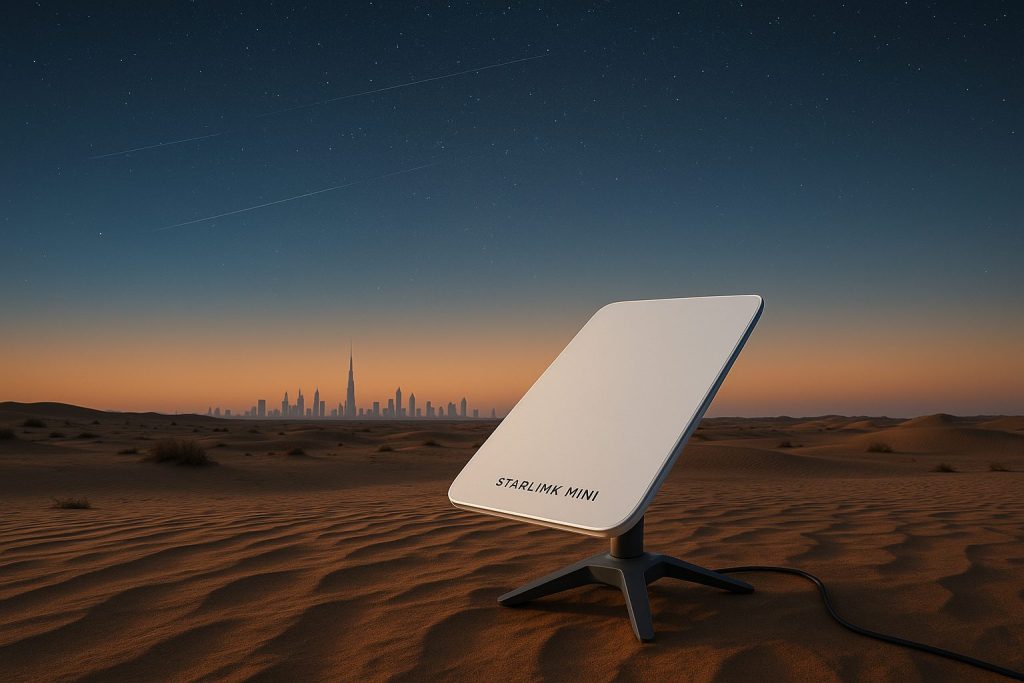Starlink in Dubai & the UAE: Current status 2025
Quick Rundown: Current Situation, Outlook, Capabilities, and Limitations for Dubai/UAE
- Current Situation: Not available for residential or general land-based use in Dubai or the UAE. Limited to maritime/aviation via a 10-year TDRA license. Availability map shows “pending” for addresses in Dubai/Abu Dhabi. GCC countries, including UAE, are welcoming it but restricting to specific sectors for now.
- Outlook: Positive momentum, TDRA’s consultation on satellite frameworks ends September 25th, 2025, potentially leading to consumer access soon. The consultation plans to establish a “Category B” licence, which would allow businesses and entities to sell satellite connectivity services such as Starlink.
- Capabilities: High speeds (100-220 Mbps download), low latency (20-40ms), portable kits for travel, unlimited basic data with priority options. Ideal for backups or remote Dubai spots like construction sites or deserts.
- Limitations: Fair use caps during peak times, potential urban signal issues from buildings, weather sensitivity, and higher costs. Not optimized for super-dense areas yet, per 2025 analyses, better in rural/low-pop setups.

Internet Providers in Dubai Right Now
If you’re an existing Starlink user heading to Dubai, or just someone digging into how internet works here, or even figuring out your connectivity options in the UAE, let’s get straight to it. Dubai’s internet is pretty solid in most places, but it has its gaps, especially during outages or in less central spots. Starlink, SpaceX’s satellite service, could fill those in, but it’s not fully here yet.

Dubai relies mainly on fiber from providers like Etisalat and du, which can hit speeds up to 10Gbps in built-up areas. That’s great for streaming, work, or whatever you need in the city center. But some issues have popped up every once in a while, like the recent Red Sea cable cuts in early September 2025, which slowed connections by up to 50% across the region. If you’re in a remote villa, on a boat, or dealing with construction, reliability can dip. For travelers or expats, this means you might need backups, especially if you’re used to Starlink’s portability elsewhere.
Could Starlink Change That?
Starlink uses a network of low-Earth orbit satellite (over 7,600 as of August 2025) to deliver internet without ground cables. In places where it’s live, it offers download speeds in the hundreds of Mbps, with median U.S. speeds around 100-200 Mbps and latency as low as 25.7ms during peak hours. That could be a game-changer for Dubai: think faster recovery from outages, better coverage in outskirts like the desert or industrial zones, and mobile options for yachts or RVs. For businesses, it might mean redundant connections during events like Expo or Formula 1. It’s especially strong in low-density areas, potentially meeting high-speed needs where fiber falls short.
But it’s not perfect. Starlink has fair use policies that prioritize data during congestion, which could limit heavy users after a certain threshold, though you can buy extra priority data. In dense cities like Dubai, performance might vary due to building interference or weather, and it requires a clear view of the sky for the dish. Costs start higher than local plans, around $100-150/month elsewhere, plus hardware. Still, with ongoing upgrades, speeds and latency are improving year-over-year.
Why Isn’t It Here Yet, and What’s Next?
Starlink is available in over 100 countries as of early 2025, including neighbors like Qatar and Oman. In the UAE, it’s approved for maritime and aviation use since 2024, so if you’re on a ship or plane, you can tap in. But for homes or businesses on land in Dubai? Not yet, it’s pending full regulatory nods from the TDRA. The UAE is carefully integrating new tech to ensure it fits with existing systems, and a public consultation on satellite rules wrapped up recently, which could pave the way.
If you’re a Starlink user visiting: Roaming might work in approved spots (i.e. maritime use), but check the app, unofficial use could run into import rules. For locals or researchers: Watch for TDRA updates; if greenlit, it could roll out by late 2025 or early 2026, starting in underserved areas. In the meantime, stick with local providers or VPNs for stability.

